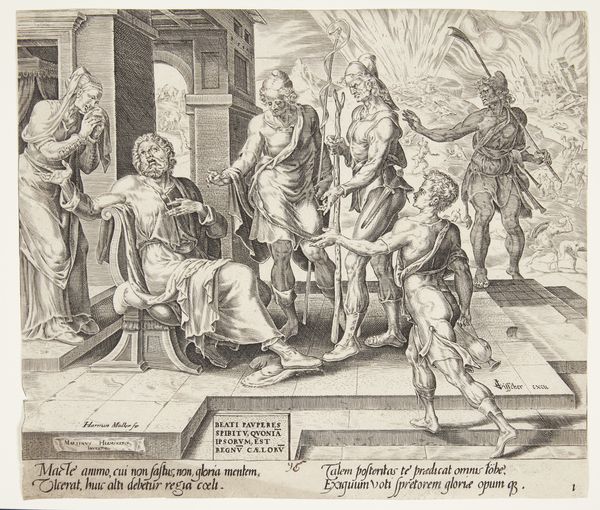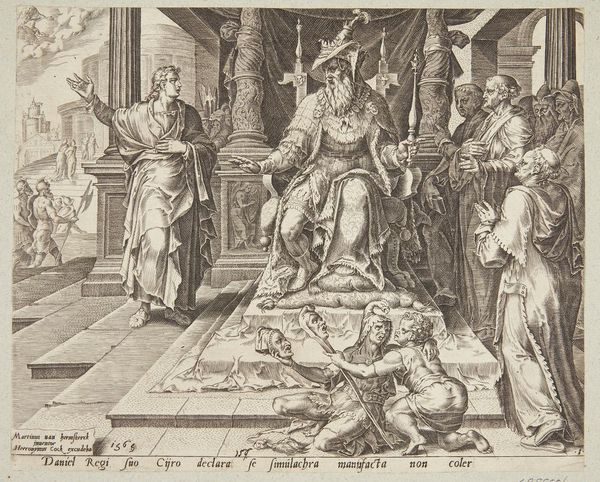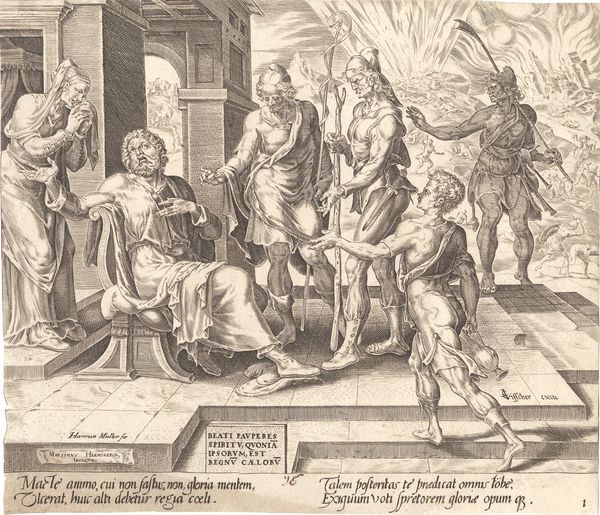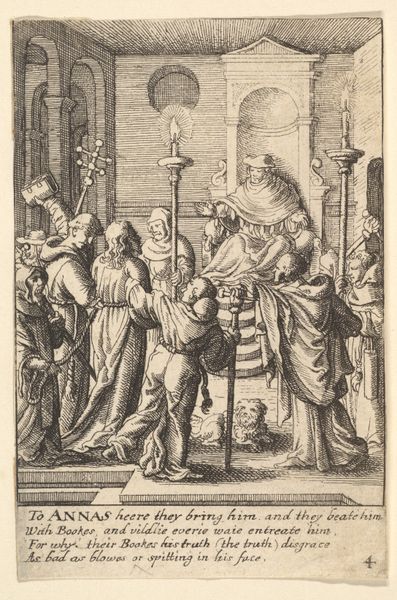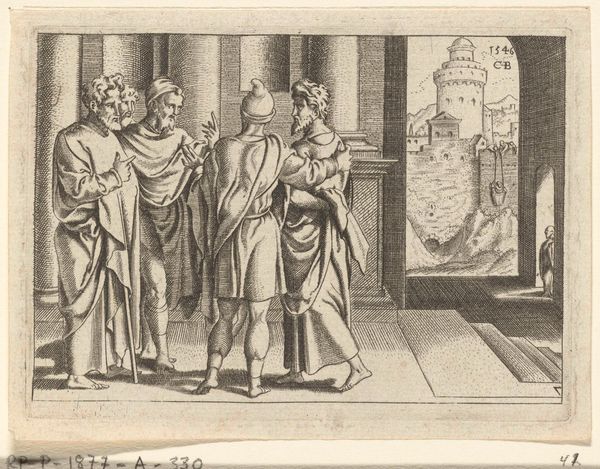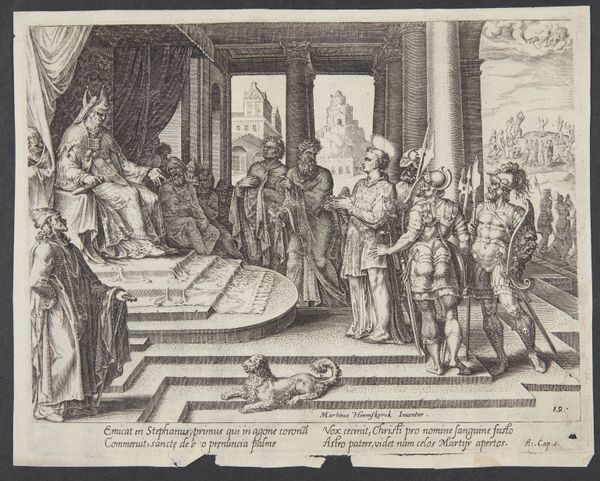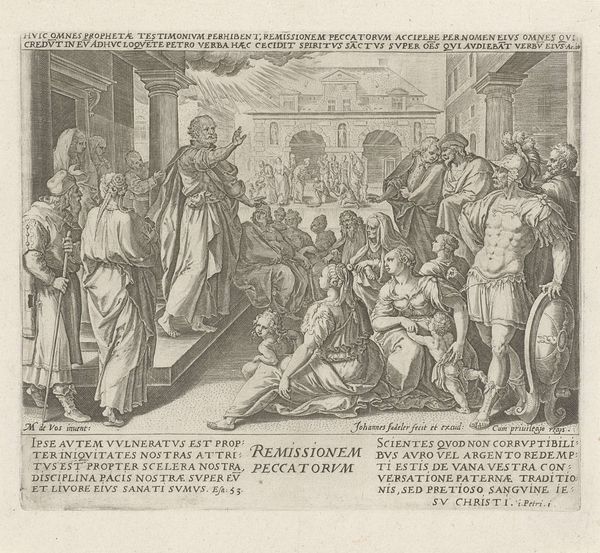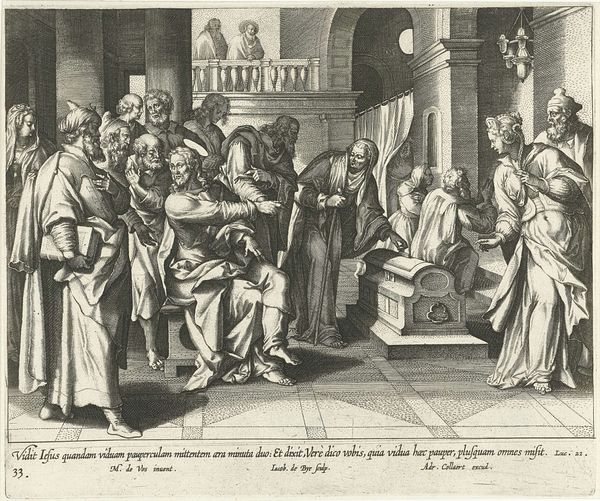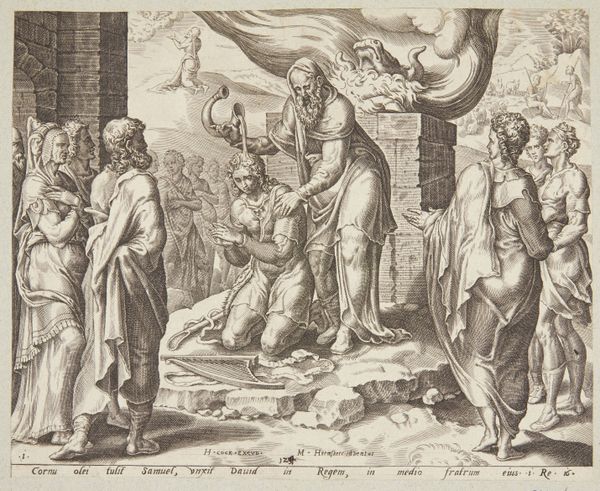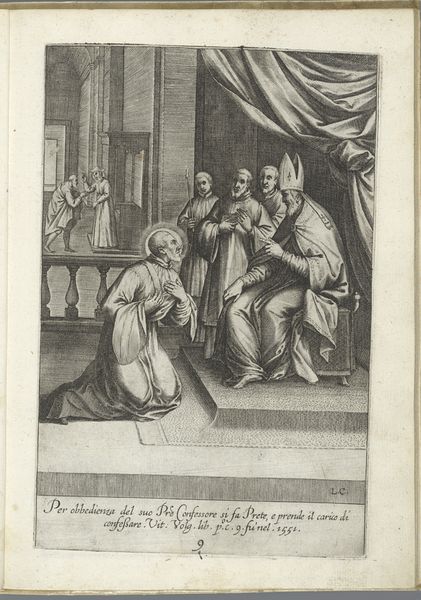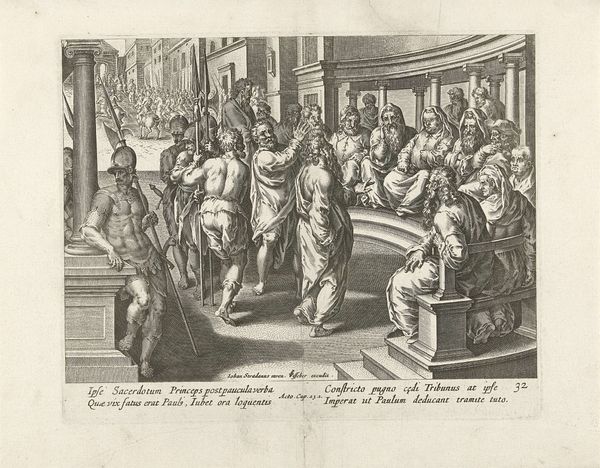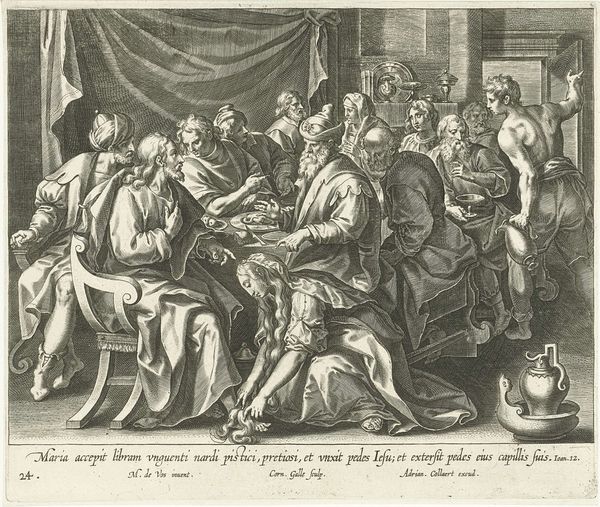
print, engraving
#
narrative-art
#
baroque
# print
#
pen illustration
#
figuration
#
line
#
history-painting
#
engraving
Dimensions: height 201 mm, width 274 mm
Copyright: Rijks Museum: Open Domain
Curator: This image, dating roughly from 1579 to 1643, is titled "Elia spreekt ten tweeden male met koning Achab." The work is currently housed here at the Rijksmuseum and is attributed to Hendrick Goltzius. It is an engraving, rendered in a striking Baroque style. Editor: My immediate reaction is that there is an unsettling, almost theatrical tension pervading this composition, which can be sensed on either side of the frame’s central barrier. The crisp linework and chiaroscuro create an intriguing dynamic. Curator: Absolutely, and consider the historical and social moment. These scenes depicting the prophet Elijah's tense exchange with King Ahab resonated powerfully during the period of the Dutch Revolt. Remember, this was a time when religious and political authority were deeply contested. The themes of defiance, faith, and resistance, as they play out within that relationship, are unavoidable. Editor: The visual contrasts reinforce this. The King’s chamber, replete with guards, stands in stark opposition to the unadorned landscape inhabited by the other figures, with one even kneeling in apparent veneration. We see not just two spaces, but the tension between worldly power and spiritual devotion. How do these visual elements serve to establish Elijah’s authority and critique Ahab's? Curator: By emphasizing Ahab's physical trappings of power—his throne, his guards, the opulence around him. Conversely, Elijah’s plainness and vulnerability make him the figure through which divine power must travel and, therefore, where true authority is situated. It's a statement about the ephemeral nature of earthly kingdoms, and I am not just seeing it reflected here between king and prophet, but by association to the real monarchies of the day. Editor: So, beyond its immediate subject matter, this image functions as a meditation on power, belief, and the moral obligation of leadership. Seen in this context, its Baroque characteristics like heightened drama and strong emotional contrasts aren’t just aesthetic choices, but vehicles to comment on issues that were critical to Dutch society during the time of its creation and likely viewed across lines of religion and authority. Curator: Yes, it offers an engagement between historical narrative and sociopolitical criticism, allowing viewers to locate themselves within these eternal dramas. Editor: Looking more carefully at how this historical work spoke into our own context gives insight into its enduring power to encourage viewers even now to re-assess their place.
Comments
No comments
Be the first to comment and join the conversation on the ultimate creative platform.
